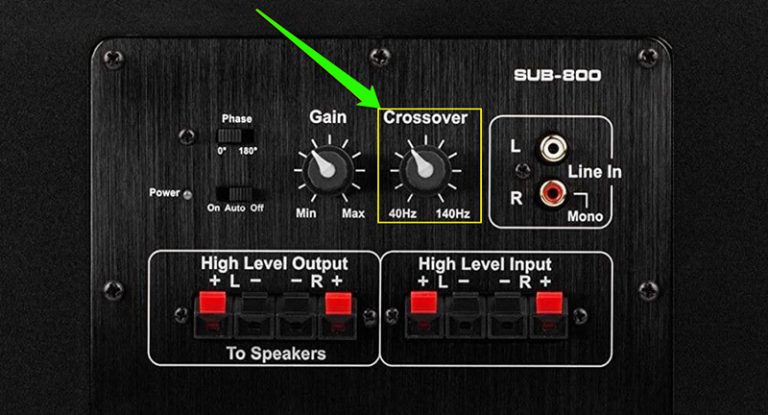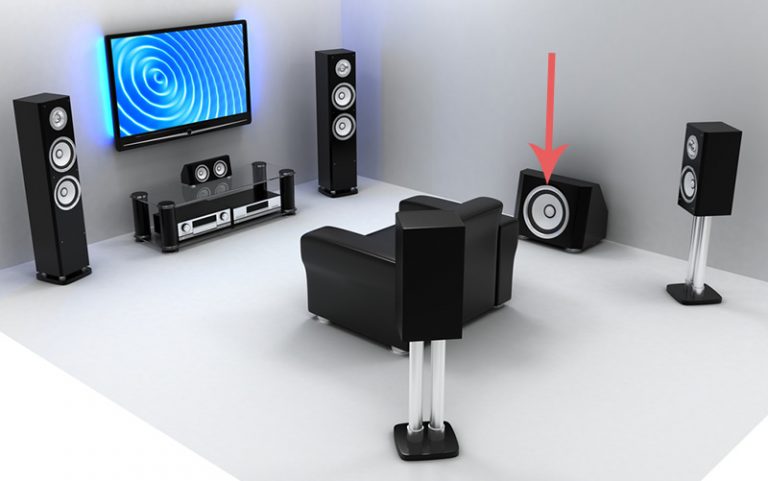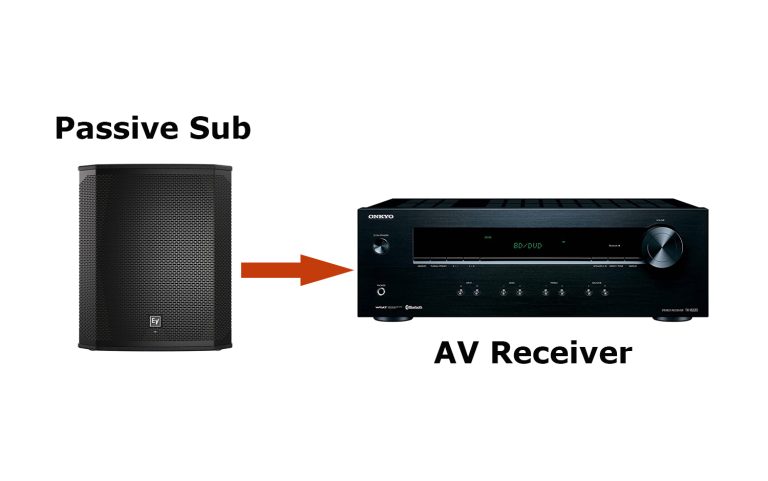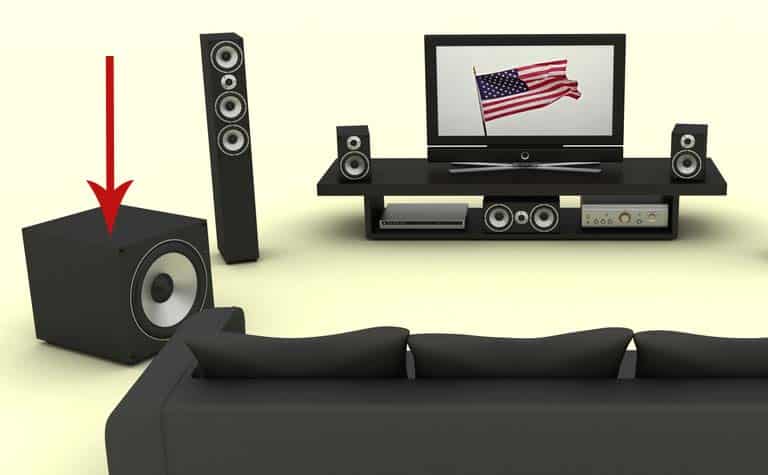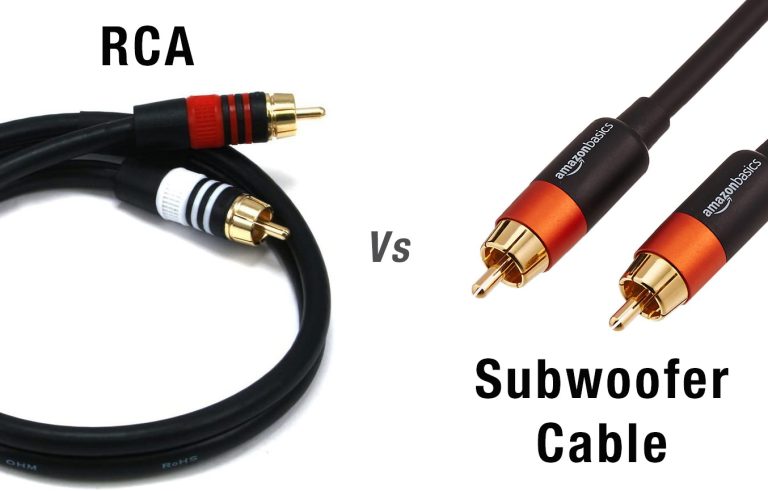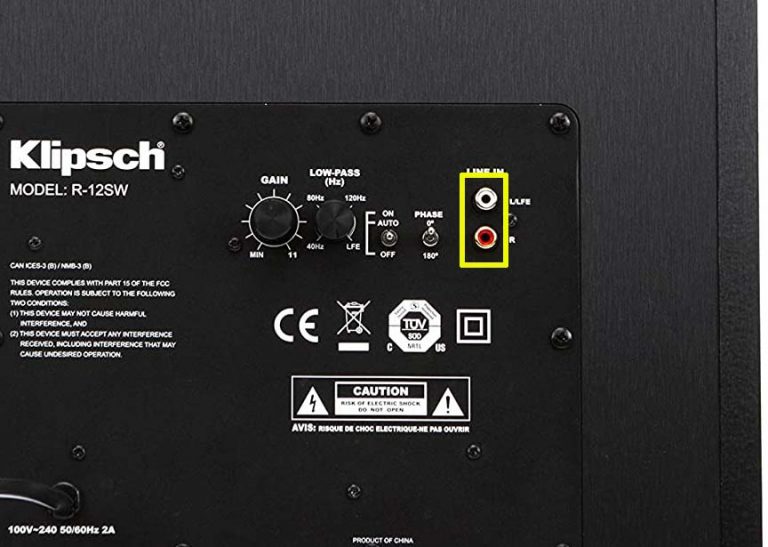How to Easily Connect a Subwoofer to Speaker Level Outputs
In most home theater setups, the subwoofer is usually connected to the receiver via the subwoofer output on the receiver. But what if your receiver is an old one and does not have a dedicated subwoofer output?
In such a case you can connect the subwoofer using the speaker-level outputs, provided your subwoofer has speaker-level connections.
To connect a subwoofer to speaker level outputs (also known as high-level outputs) first run left and right speaker cables from the speaker-level outputs of the receiver to the subwoofer inputs. Next, connect the speaker-level output of the subwoofer to your main left and right speakers.
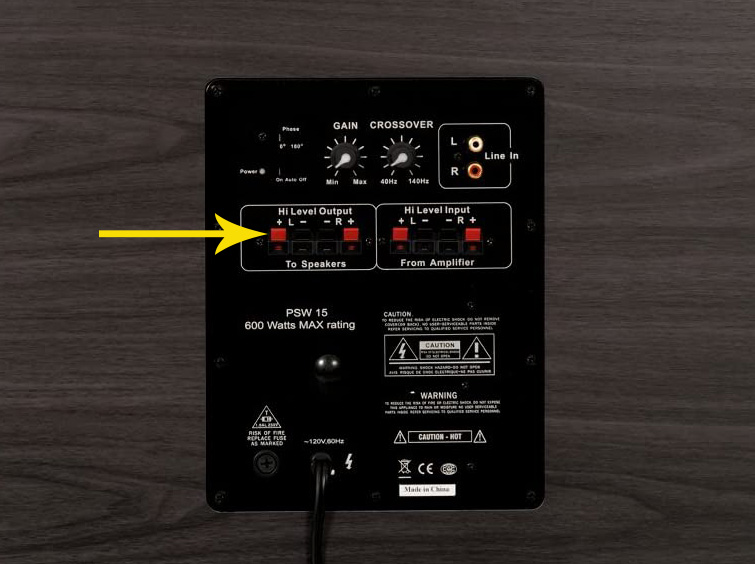
New to audio setups and confused with all this wiring? Not to worry- we’ve got your back.
In this article, we’ll explain what speaker-level connections are and give you step-by-step instructions on how to connect your subwoofer to your receiver using these outputs.
We’ll also suggest alternative methods of connecting the two devices if you don’t have these ports available.
Also read: Subwoofer Cable vs RCA
What are Speaker Level Connections? How are they different from other Subwoofer connections?
Speaker-level connections (also commonly known as high-level connections) are used to connect a subwoofer to a receiver when a dedicated subwoofer port is not available on either or both of the devices.
In this type of connection, the subwoofer as well as the other speakers in the home theater system receive the same audio signal. They are connected via the speaker wire terminals at the back of the receiver and subwoofer.
So, how are these connections different from regular Subwoofer connections? Let’s take a look.
There are mainly two ways of connecting your subwoofer to your receiver-
- Low-level connections also known as line-level connections
- High-level connections also known as speaker-level connections
Low-Level/ Line-level Connections
If you want to enjoy the benefits of surround sound and its thumping bass, low-level connections are the preferred means of connecting your subwoofer to your A/V receiver.
That’s because, in 5.1 or higher surround content, there is usually an additional bass-only track called the LFE, (Low-Frequency Effects) which is designed to be played by the subwoofer.
This type of connection is available on the A/V receiver via its subwoofer output and may be labeled as LFE, Sub Out or Subwoofer, or even Sub Pre Out. This connection sends only the low bass frequencies to your subwoofer.
High-Level / Speaker-Level Connections
High-level/Speaker-level connections, on the other hand, receive the full frequency range of audio signals from the receiver. That means you’ll miss out on the additional LFE track on a surround-sound movie soundtrack.
However, if you have an old home theater receiver or a stereo receiver, you may not have the option of using the low-level subwoofer connection. In this case, you can connect your subwoofer to your receiver using the high-level connection.
You can also use a high-level connection when listening to music. In fact, some audiophiles even prefer this type of connection for music as they feel it has a more natural, textured sound.
They attribute this to the fact that since both the speakers and the subwoofer receive the same audio signal, they will be perfectly synched.
If you need to use high-level connections to hook your subwoofer up to your receiver, here’s a step-by-step guide.
Also read: How to Easily Connect Your Soundbar to Multiple Devices
How to connect a Subwoofer to Speaker Level Outputs
Depending on the type of ports available on your subwoofer, there are two methods you can use to connect your subwoofer to your receiver using speaker-level outputs. You will need an extra set of speaker wires or cables for this.
Method 1: If your subwoofer has IN and OUT speaker wire connections
In this method, the subwoofer filters out the bass sounds and sends the remaining signal to the speakers.
Step 1- Power off all your devices before you begin.
Step 2-Check if your subwoofer has IN and OUT speaker wire connections.
Step 3- Connect the left and right speaker wires from the receiver outputs to the left and right speaker IN on the subwoofer.
Step 4– From the left and right speaker OUT on the subwoofer, connect speaker wires to your main left and right speakers.
Step 5- Power on your devices to check the audio. Use the crossover dial to set the filter frequency (in Hertz)The crossover frequency determines the highest notes your subwoofer can play.
Some recommend setting it at 80 Hz. However, if you know your speakers’ frequency range, you can set the frequency to about 10 Hz above what the speakers can comfortably handle. You’ll usually find this information in your speakers’ user manual. Check out this article for tips on setting crossover frequency.
Method 2: If your subwoofer has no OUT but has a high-level connection
The second method uses a parallel speaker-level connection. You can use this type of connection if your subwoofer does not have speaker output sockets but instead has a speaker input connection labeled as High-level or Hi-level.
Step 1- Power off all your devices before you begin.
Step 2- Locate the speaker connections on your receiver. Use the speaker terminals for the front left and front right speakers of your receiver.
Step 3- You will need to run two sets of wires from the receiver- one set to the speakers and one set to the subwoofer. Basically, the subwoofer and speakers will share the same connections.
(Note- it is important that you check your subwoofer manual to see if its impedance input is high- this allows both the subwoofer and speakers to be safely connected at the same time)
Step 4- Power on your devices to check the audio. To blend the sound of your subwoofer and speakers you can use the gain, filter, and phase controls on your subwoofer. Here’s a helpful article that shows you an idea of how to use these controls.
Other ways to connect your subwoofer to a receiver
- If your receiver has a subwoofer out and your subwoofer has an LFE input: Use an LFE cable (Available on Amazon)to connect the two.
- If your receiver has only a PRE-OUT port– If you have an active subwoofer, you can use the PRE-OUT port on the receiver to connect the two devices. The PRE-OUT port is usually used to connect external amplifiers to a receiver.
While the pre-out port will send the full-range frequencies to the subwoofer, the subwoofer will only play the bass frequencies delivered by the pre-out ports and ignore the rest of the frequencies. You can use an RCA-type input jack for this connection.
- If your subwoofer is a passive one- Use an external amplifier as an intermediary to connect your passive subwoofer to a receiver. First, connect it to an external amplifier, then connect the amplifier to the receiver.
Conclusion
Connecting your subwoofer to your receiver without subwoofer output may seem tricky, but it is possible if your subwoofer has speaker-level connections.
Using the methods given above, you can hook up your subwoofer to your receiver and enjoy the richness of the deep, rumbling bass sounds that will transform your home theater experience.
